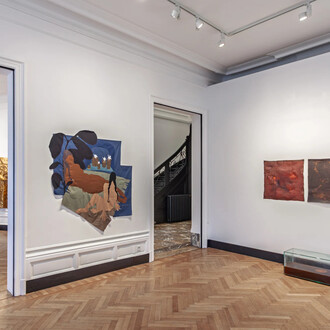The ceramics and bronzes from Vietnam form the biggest ensembles in a museum outside that country. Among the total of 3 000 pieces, which incidentally provide a survey from Neolithic times to the nineteenth century, are a number of top-quality items, including a dated vase from the second century, painted ceramics from the early Vietnamese dynasties of the Ly and the Tran (eleventh to the fourteenth century), monochrome ceramics and celadon ware, large bronze drums, a dagger and a gilded, bronze ritual axe from the Dong Son culture.
Representing the rich culture of the Khmer in Cambodia are ten, large, characteristic stone sculptures acquired during a campaign of excavation in the 1930s.
From Thailand and Burma, perhaps more modestly, there are one or two typical paintings, gilded bronzes, woodcarvings, ceramic and an eighteenth-century illuminated manuscript.
The Indonesian collection is characterized by its great variety and a number of high-quality objects acquired locally in the nineteenth century, including Batak weapons and images from Sumatra, a number of typical sculptures from Java, Nias, Leti and Tanimbar, models of houses, a number of fine jewels and articles for magic and adornment, smoking requisites and typical betel secateurs. In addition, there are batik and ikat textiles, wickerwork and a number of Balinese paintings and drawings. The whole is rounded off with masks and a shadow-puppet theatre with a gemelan orchestra.
















